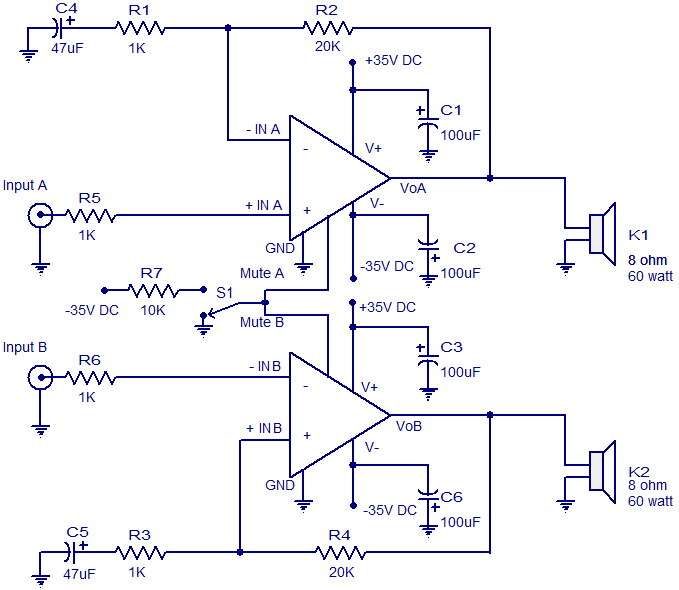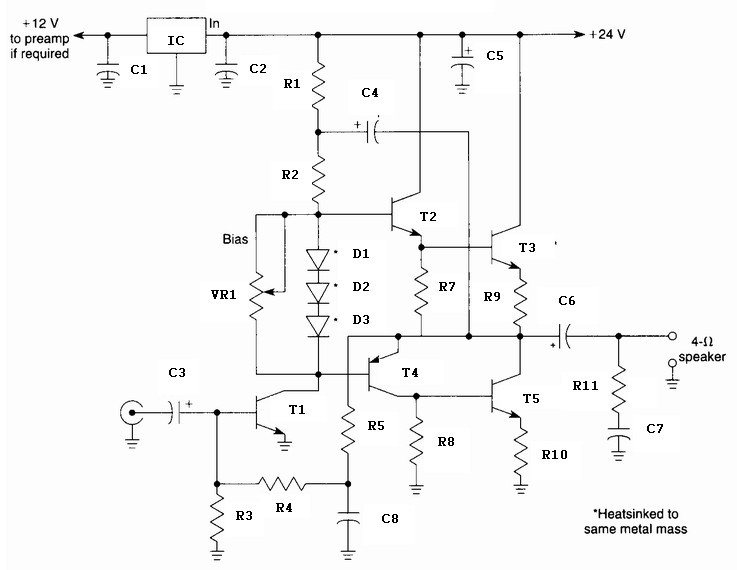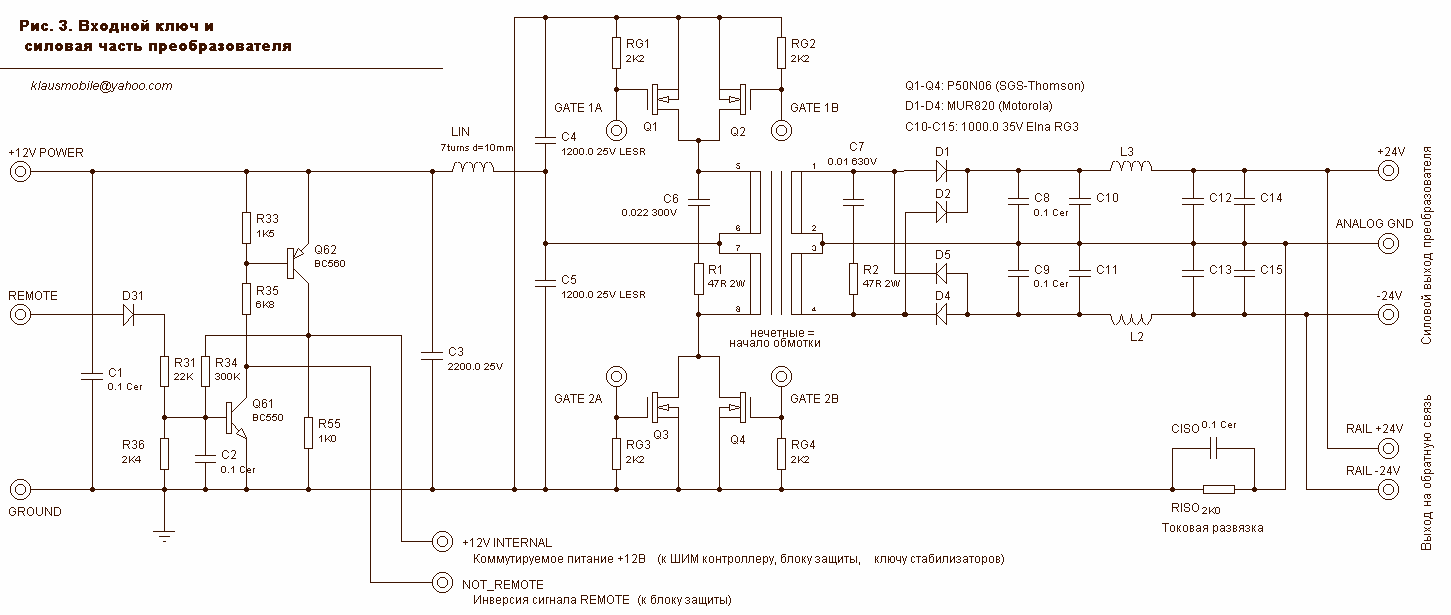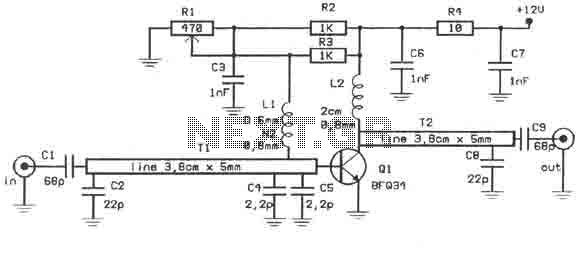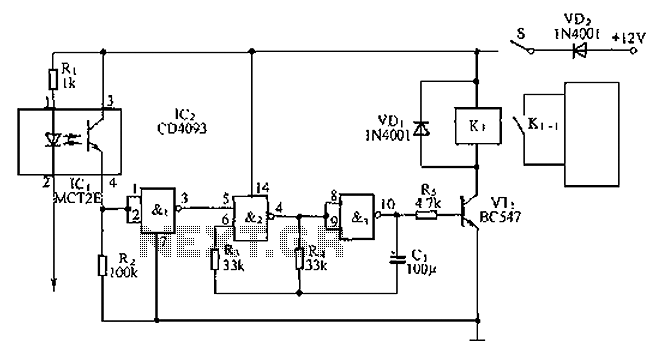
Stereo Audio signal Isolator
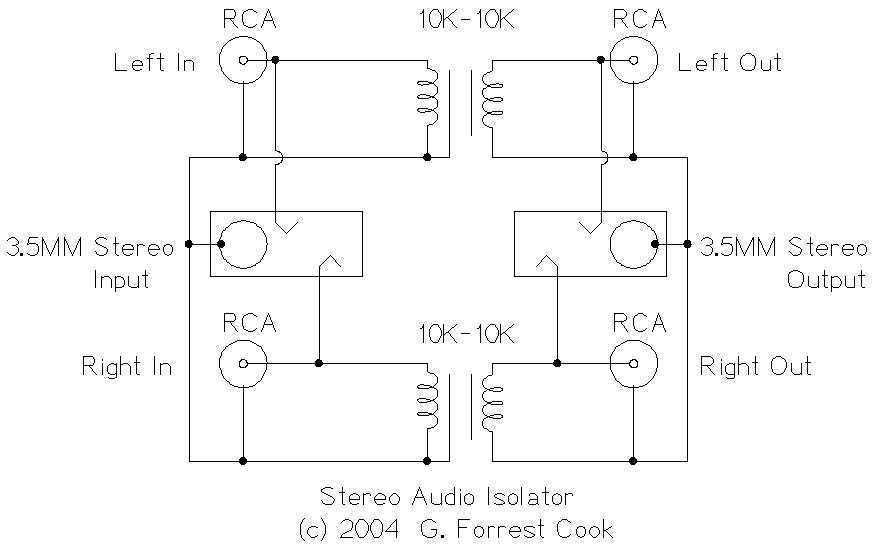
This circuit is useful for removing ground loop hum on a remote line level audio signal line. It can be used to connect a computer sound card to a stereo amplifier's line input. Other uses include tapping into a line level signal for powering a remote amplifier, and removing common mode ground interference on 12 Volt audio equipment such as a car stereo. The circuit can be used in mono applications by simply ignoring the second channel. More: Connections: L and R RCA Jacks, stereo 3.5mm jacks Operating voltage: 1V P-P nominal (line level audio) Input Impedance: 10K ohms Output Impedance: 10K ohms Frequency response: untested L-R Channel isolation: untested Theory The audio signal is
This circuit is designed to effectively eliminate ground loop hum from audio signals, making it particularly useful in environments where multiple audio devices are interconnected. Ground loops can introduce unwanted noise, particularly in remote audio applications, and this circuit addresses that issue by isolating the audio signal path.
The circuit typically incorporates isolation transformers or differential amplifiers to achieve the desired noise reduction. The use of RCA jacks allows for easy integration with standard audio equipment, while the stereo 3.5mm jacks provide compatibility with portable devices such as computers and smartphones. The nominal operating voltage of 1V peak-to-peak is suitable for line-level audio signals, ensuring that the circuit can handle typical audio outputs without distortion.
With an input and output impedance of 10K ohms, the circuit is designed to maintain a high level of compatibility with various audio sources and loads, minimizing signal loss. The frequency response has not been tested, which indicates that users should evaluate the circuit's performance in their specific applications to ensure it meets their audio quality requirements. Additionally, the L-R channel isolation has not been tested, which may impact stereo applications if the circuit is used without proper consideration of channel separation.
In summary, this circuit serves as an essential tool for audio professionals and enthusiasts who require a reliable solution for ground loop hum removal, ensuring cleaner audio signals in a variety of applications.This circuit is useful for removing ground loop hum on a remote line level audio signal line. It can be used to to connect a computer sound card to a stereo amplifier`s line input. Other uses include tapping into a line level signal for powering a remote amplifier, and removing common mode ground interference on 12 Volt audio equipment such as a car stereo. The circuit can be used in mono applications by simply ignoring the second channel. Connections: L and R RCA Jacks, stereo 3.5mm jacks Operating voltage: 1V P-P nominal (line level audio) Input Impedance: 10K ohms Output Impedance: 10K ohms Frequency response: untested L-R Channel isolation: untested Theory The audio signal is 🔗 External reference
This circuit is designed to effectively eliminate ground loop hum from audio signals, making it particularly useful in environments where multiple audio devices are interconnected. Ground loops can introduce unwanted noise, particularly in remote audio applications, and this circuit addresses that issue by isolating the audio signal path.
The circuit typically incorporates isolation transformers or differential amplifiers to achieve the desired noise reduction. The use of RCA jacks allows for easy integration with standard audio equipment, while the stereo 3.5mm jacks provide compatibility with portable devices such as computers and smartphones. The nominal operating voltage of 1V peak-to-peak is suitable for line-level audio signals, ensuring that the circuit can handle typical audio outputs without distortion.
With an input and output impedance of 10K ohms, the circuit is designed to maintain a high level of compatibility with various audio sources and loads, minimizing signal loss. The frequency response has not been tested, which indicates that users should evaluate the circuit's performance in their specific applications to ensure it meets their audio quality requirements. Additionally, the L-R channel isolation has not been tested, which may impact stereo applications if the circuit is used without proper consideration of channel separation.
In summary, this circuit serves as an essential tool for audio professionals and enthusiasts who require a reliable solution for ground loop hum removal, ensuring cleaner audio signals in a variety of applications.This circuit is useful for removing ground loop hum on a remote line level audio signal line. It can be used to to connect a computer sound card to a stereo amplifier`s line input. Other uses include tapping into a line level signal for powering a remote amplifier, and removing common mode ground interference on 12 Volt audio equipment such as a car stereo. The circuit can be used in mono applications by simply ignoring the second channel. Connections: L and R RCA Jacks, stereo 3.5mm jacks Operating voltage: 1V P-P nominal (line level audio) Input Impedance: 10K ohms Output Impedance: 10K ohms Frequency response: untested L-R Channel isolation: untested Theory The audio signal is 🔗 External reference

